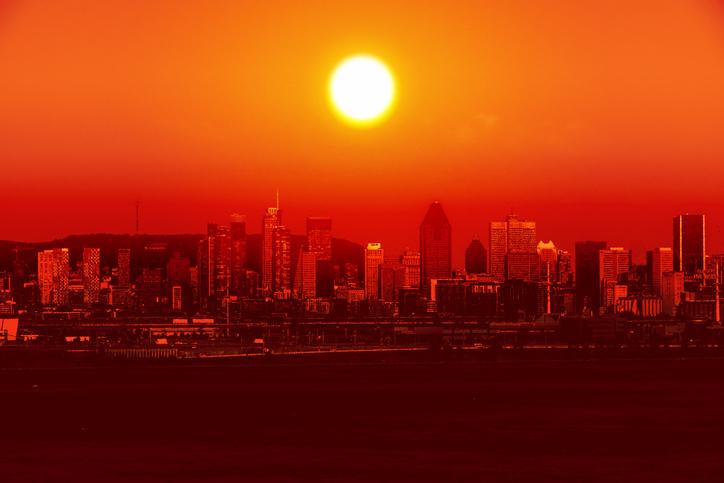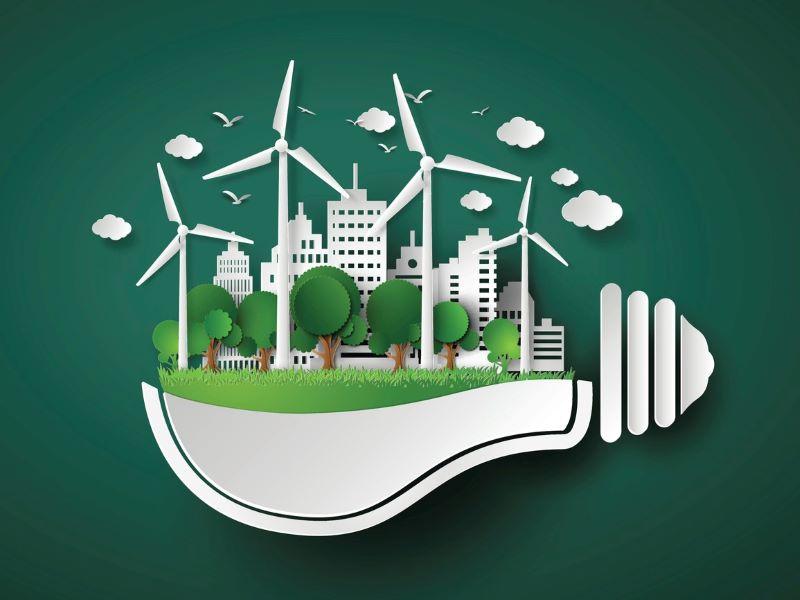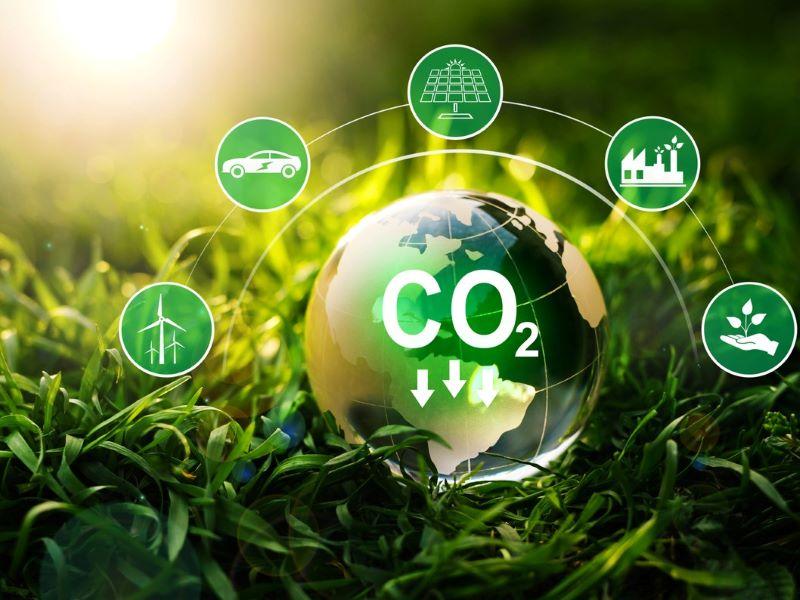What would a well-adapted university look like? Perhaps there are fewer weather-related disruptions to power supplies and transport routes. Maybe offices, laboratories, and student accommodation are comfortable during heatwaves. Or flood damage to buildings and critical infrastructure is less costly than present. Supply chains remain intact and biodiversity is thriving across campus.
All these assume adaptations to universities as we would recognise them today. But higher education institutions could look very different in the future as a result of megatrends in education shaped by demographics, technology, policy and evolving labour markets.
Scenarios can help us envision how adaptation, plus net zero plans, might perform under plausible yet contrasting futures. Here are four scenarios for universities in 2050 imagined by ChatGPT and the authors:
Sustainable and community-engaged education: Universities take a central role in addressing global challenges and sustainable development. Community engagement and experiential learning are core features as students work on real-world projects with local partners. Campuses prioritise environmental sustainability and serve as hubs for sustainable research and innovation.
Skills-based and lifelong learning: Universities shift from degree-based education to greater focus on acquiring specific skills. Microcredentials, digital badges and continuous education programmes are prominent. Universities partner with industry and professional bodies to offer targeted skills development. Lifelong learning is needed to upskill and reskill to adapt to evolving job markets.
Technologically integrated education: Advances in technology transform the learning process. Virtual and augmented reality, with artificial-intelligence-powered adaptive learning platforms integrate into educational practices. Students engage in immersive virtual environments, collaborate with peers globally, and receive personalised instruction from avatar professors. Campuses are hubs for practical experience and social interaction.
Decentralised and globalised education: The rise of online learning and global partnerships leads to decentralised education. Universities collaborate across borders, offer joint degrees and share resources. Students access diverse courses taught by AI lecturers and study at multiple institutions simultaneously. Campuses focus on specialised programmes and research centres.
- Part one: Start your university on a path to resilient net zero
- Transformative not transmissive education for sustainability
- To offset or not to offset – that is the question
These potential scenarios – or more likely a fusion of them all – would reshape the roles of academics, support services, teaching spaces and campuses. Redundant buildings might be converted to new uses such as apartments; emptier campuses could be rewilded. Rather than physical climate risks to people, primary threats might be to critical IT systems and knowledge repositories.
Timescales matter. Planning and procurement for the next academic year is challenging enough but what about for the coming 10, 20 or 50 years? Such horizons might sound fantastical but they are certainly within the expected lifetime of a new hall of residence or learning lab being built today. When Henry VIII founded Christ Church, Oxford in 1546 it is unlikely that 21st-century climate conditions were at the forefront of his mind (despite the severe 1540 heatwave and drought). Yet, heritage buildings are still integral to many universities and present all sorts of weather-proofing headaches to estate managers.
Hence, we need foresight of the intended outcomes and benefits of adaptation actions plus visions of the socio-techno-economic context and time frame over which plans may materialise. These are covered by the first two steps of the UK Universities Climate Network (UUCN) framework on strengthening the climate resilience of institutions. As elaborated below, the first step is about setting adaptation objectives. Step two is then focused on gathering essential information for the later phases of planning:
Step 1. Set adaptation goals
Start with stakeholder mapping, strategy and policy reviews – including scope for alignment of institutional, national and sector-wide adaptation plans. This gives a sense of who and what is already active in the space. For example, nationally, any vulnerable buildings must comply with climate change allowances set out by the Environment Agency for flood risk management. At regional and city levels, universities may be engaged in community actions such as the Leeds Climate Commission and the Yorkshire and Humber Climate Action Plan. The Cities & Regions Working Group of UUCN is also convening a community of practice for university staff and academics.
Next, consider the following guiding questions:
- What are the strategic goals and desired outcomes of my university?
- What community, industry and government support has been secured?
- What other policies and strategies align with the adaptation plan, such as for carbon management and sustainability?
- What is an acceptable level of risk?
Such queries are best addressed by early engagement with stakeholders. This could be via outreach and focus groups that build trust and mutual understanding; forums can also catalyse local interest and save time when collating data.
These activities would help to shape a statement of intent for the plans such as:
To identify potential risks caused by existing and expected climate change; to understand how these interact with university operations; to account for climate resilience in net zero delivery; and to identify key actions to reduce the negative impacts of climate change on people, critical assets and operations in 2050.
Such ambitions can then be viewed through the prism of the most relevant or likely mix of scenarios. For instance, who or what might be most vulnerable under a “Sustainable and community-engaged education” or “Technologically integrated education” scenario?
Step 2. Gather essential information
Diverse sources of information are required to build a robust adaptation plan. Again, a few guiding questions can really focus efforts:
- Are there previous climate risk analyses and adaptation plans for the university?
- What weatherproofing or risk-reducing actions have already been taken?
- What technical and financial resources are available?
- What baseline socio-economic and climate data exist?
- What (if any) data have been compiled on historic weather impacts, losses and damages?
- What local climate change scenarios are available for evaluating future risks?
Typical building blocks for an adaptation plan include: high-resolution elevation data; detailed maps of land use and critical infrastructure; inventories of building type, fabric and performance; local weather, river flow and biodiversity records; information about any historic impacts by, for example, floods and heatwaves on people, facilities, and operations; model projections of future climate conditions, such as rainfall and temperature extremes; strategic development plans for student numbers, research, teaching and supporting estates.
Much information will be held within the institution but requires integration. Student and staff research and expertise can support this and add new information on, for example, biodiversity and habitats around the campus. Data on past and future climate can be accessed through portals such as the UK Climate Projections. Other environmental data sets and key literature may be signposted by compendiums of information sources. Once the available resources are collated, you will be better placed to spot any gaps and judge the technical sophistication that can follow.
Next steps
In our next resources, three and four in the series, we will describe respectively how to use the above data and scenarios to evaluate future risks, then prioritise actions that build resilience to climate change. Throughout, we should be envisioning not only future climate conditions but also the likely reshaping of education by other major drivers. These include disruptive and assistive technologies such as the AI used to enhance this article.
This is the second in a series of articles offering advice on how universities can build climate change resilience while also working towards net zero. Read the first article here: Start your university on a path to resilient net zero.
Rob Wilby is professor of hydroclimatic modelling at Loughborough University, and Shona Smith is research and innovation development manager for the Priestley International Centre for Climate at the University of Leeds.
If you would like advice and insight from academics and university staff delivered direct to your inbox each week, sign up for the Campus newsletter.




comment